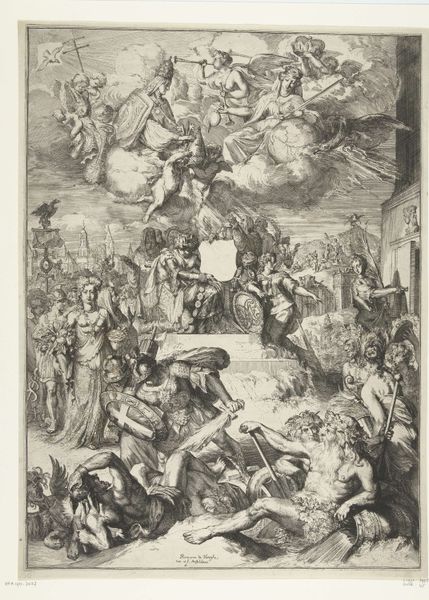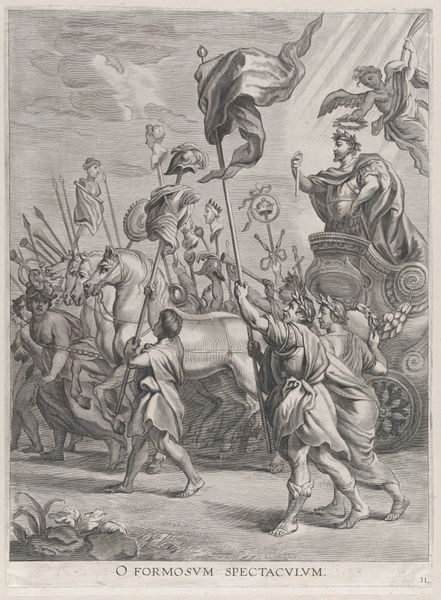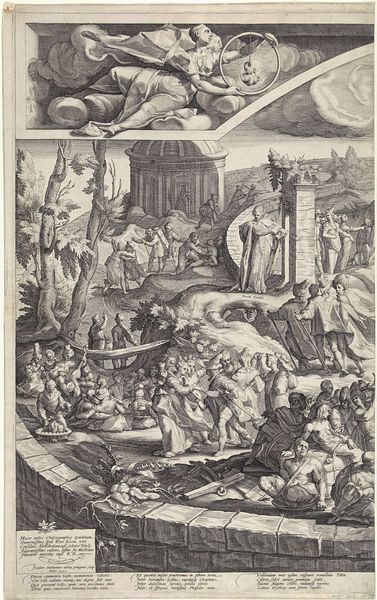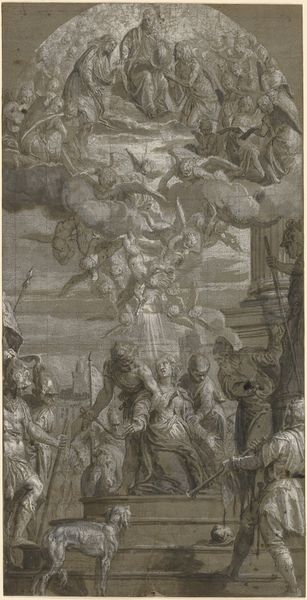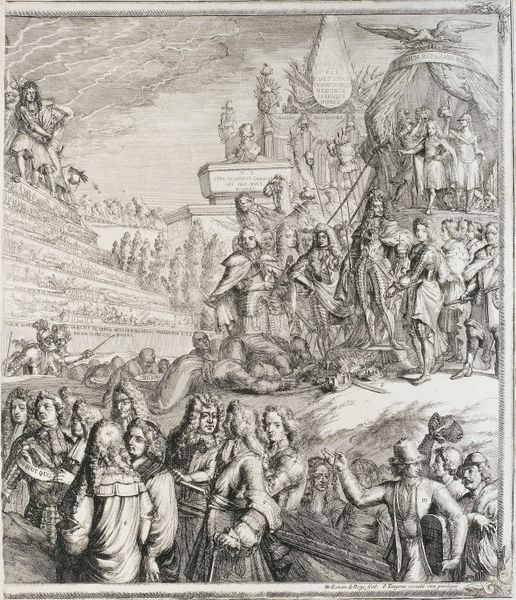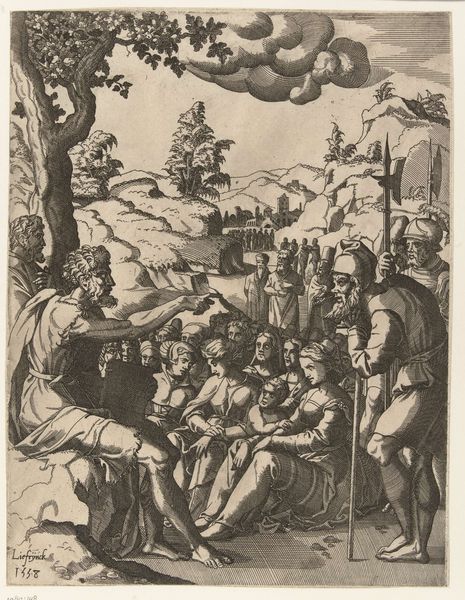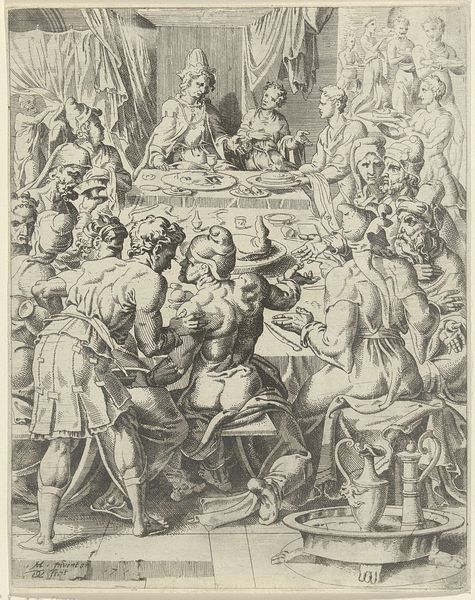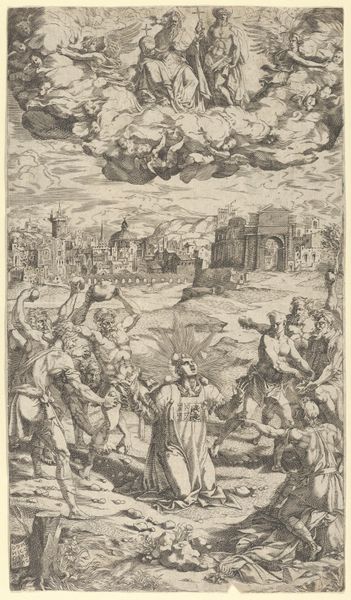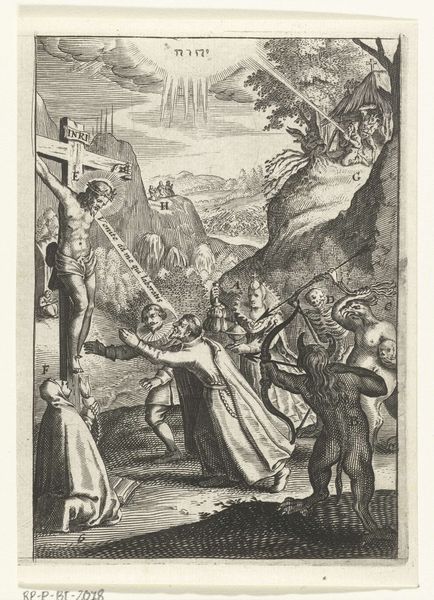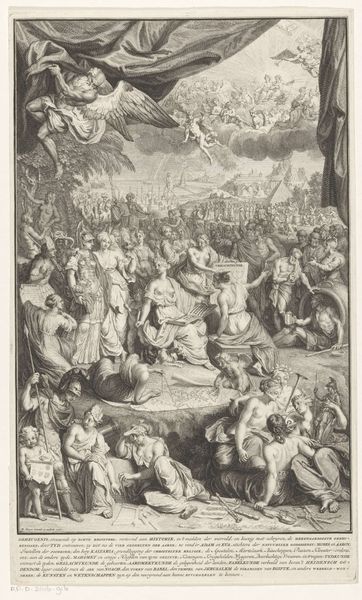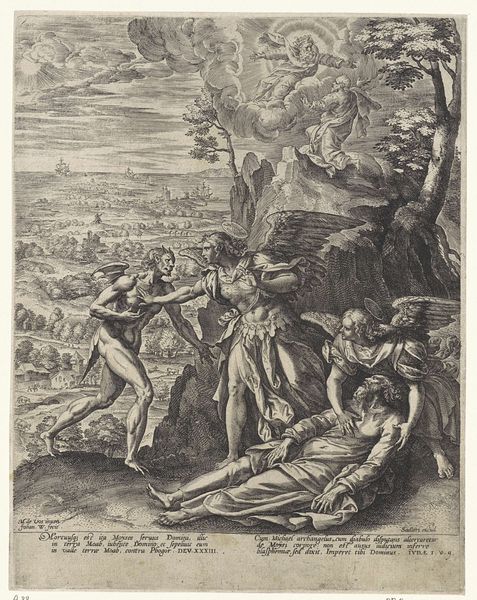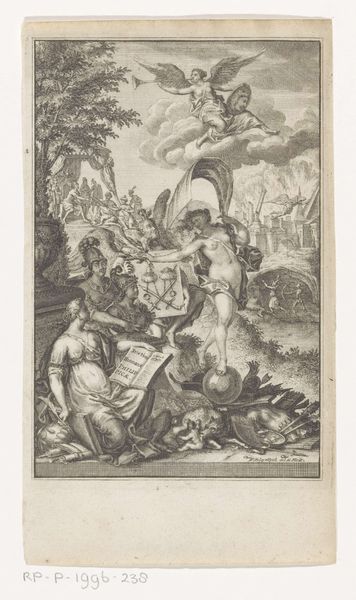
Allegorische triomfoptocht van een vorst of veldheer 1671 - 1746
0:00
0:00
drawing, ink, pen
#
drawing
#
allegory
#
baroque
#
pen illustration
#
figuration
#
ink
#
pen
#
history-painting
Dimensions: height 218 mm, width 174 mm
Copyright: Rijks Museum: Open Domain
Curator: This intricate pen and ink drawing, currently residing here at the Rijksmuseum, is titled "Allegorische triomfoptocht van een vorst of veldheer," which translates to "Allegorical Triumphal Procession of a Prince or Commander." Its creation is attributed to François van Bleyswijck and estimated to fall somewhere between 1671 and 1746. Editor: Immediately striking! The composition, despite its monochromatic palette, explodes with movement. The sheer density of figures overwhelms, creating this feeling of pomp and ceremony, but also perhaps of suffocating control? Curator: Indeed. We see a grand procession led by a figure enthroned, likely the prince or commander referenced in the title. Observe the strategic deployment of figures to build up to this character. To his left, the artist depicts another individual sitting on top of a triumphant elephant. Editor: And above, floating figures are suspended among billowing clouds, offering a celestial validation of the power structure on display. The details feel intentional to elevate those in control. What's also fascinating to me is how Bleyswijck used line work to denote not just form but also mood. Curator: You've highlighted an interesting point. This drawing emerged within the baroque style, characterized by dynamic composition and emotional appeal. Its production coincided with significant social shifts, and, more generally, this kind of artwork was designed for conspicuous display to signal an artist’s talents. Editor: Which always leaves me wondering who the intended audience was. Was this primarily for the elite? To reinforce their perceived divinely ordained right to rule? This kind of imagery can certainly be interpreted as propaganda, designed to manufacture consent. Curator: One could reasonably argue so, yes. It functioned as a visualization of power, communicating not just the ruler's authority but also the scope and grandeur of their dominion. And considering the period, art heavily depended on wealthy people for commission work. Editor: What’s unsettling is the normalisation of such displays in art, even now. There needs to be questioning as to whether these scenes should even be in a museum in the first place. Whose voices are omitted in these narratives of conquest and triumph? How might those stories change our understanding? Curator: Museums, then, play a crucial role in providing context, encouraging a multiplicity of perspectives on these artifacts. It's through continuous questioning that we deepen our engagement. Editor: Agreed. It's by facing the complex past and acknowledging the excluded communities that are the victims of displays of grandiosity. In the process, we open possibilities for critical dialogue, challenging conventional readings.
Comments
No comments
Be the first to comment and join the conversation on the ultimate creative platform.
